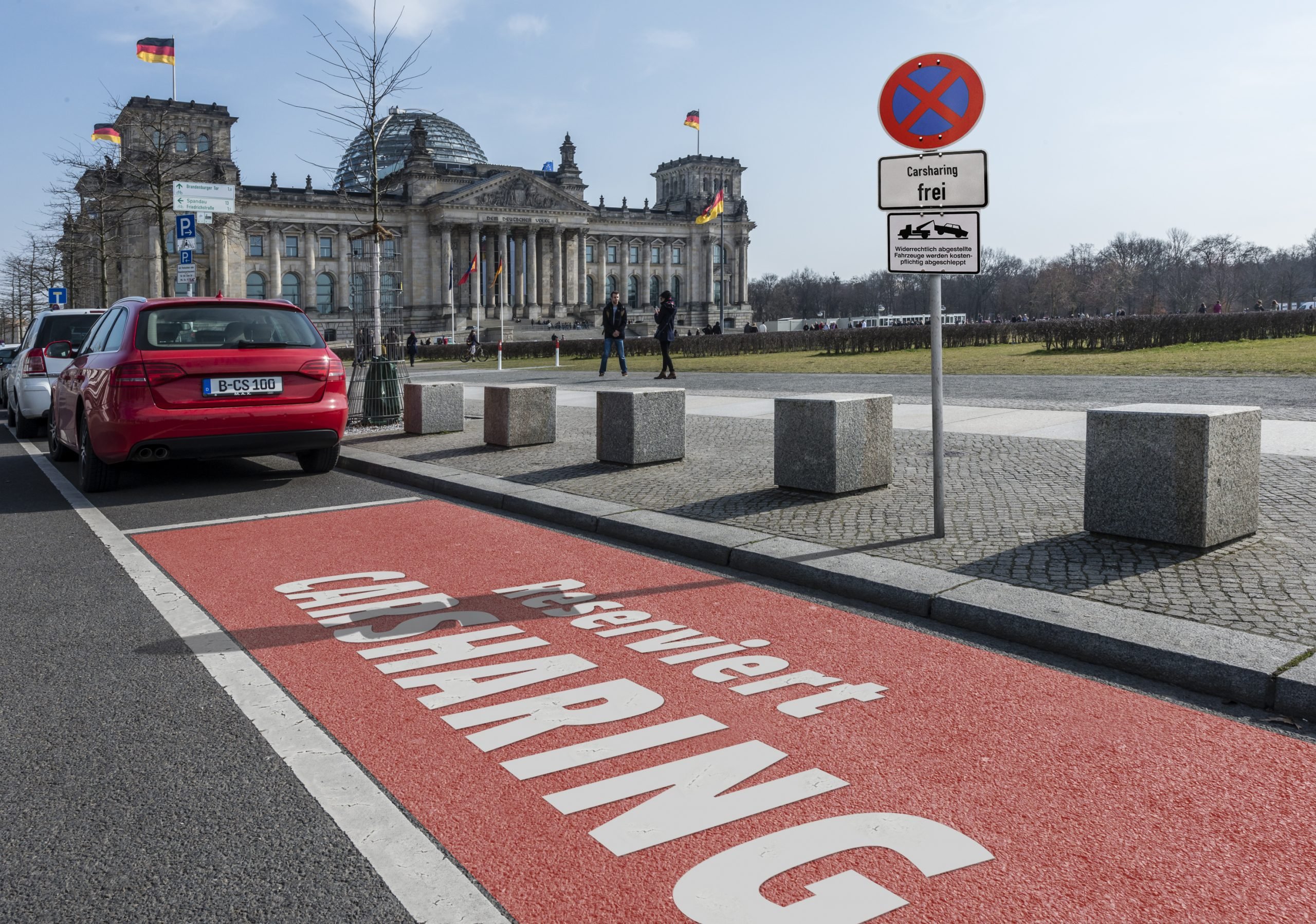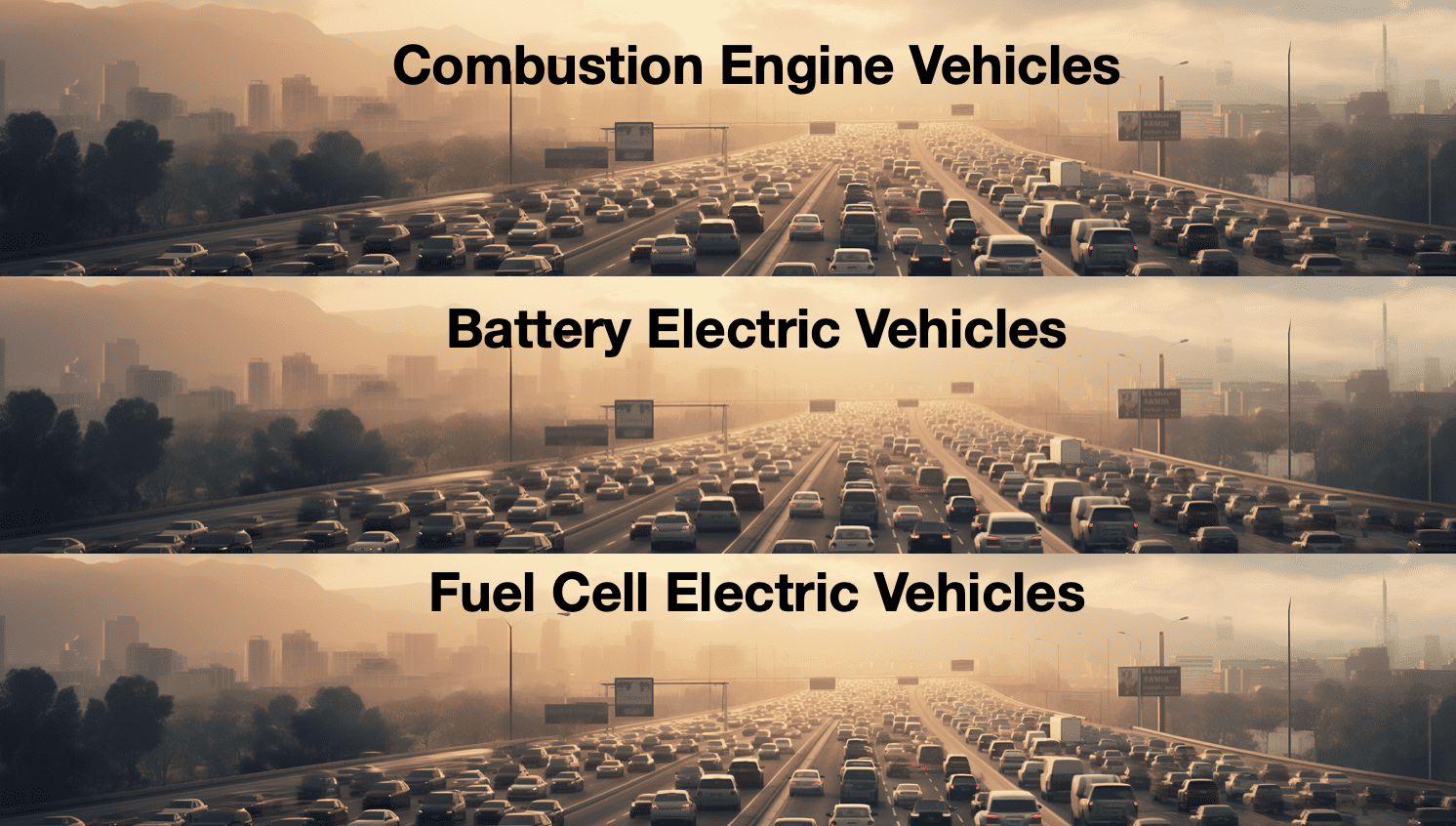
One thing is clear: the car sharing market is growing. But there is also no doubt that growth lags far behind the forecasts and potential predicted for this industry. There are also contradictory assessments of the benefits. Is car sharing the future of individual mobility? Or is it just another additional offer? Does it relieve traffic and reduce pollution? Or are car manufacturers cleverly tapping into new user groups? All these issues are hotly debated. IO spoke with Wiebke Zimmer. She studied chemistry and has been Deputy Head of the Resources and Mobility Division in the Berlin office of the Öko-Institut since 2013.
Increasing number and variety of car sharing offers in Germany
The German capital of car sharing is not Berlin, but Karlsruhe, where there are 2.15 sharing vehicles per thousand inhabitants. Munich and Hamburg follow. In fourth place, however, Berlin can also claim a title: it is the city with the largest number of different providers. Berlin is diverse, including with regard to the car sharing market, as there are eight major providers in the city. There is something for everyone. Basically, a distinction is made between station-based and flexible or free-floating offers. Depending on the type of use, one or the other is more suitable.
Picking up from and returning to a fixed station is worthwhile for longer trips because it is cheaper. For spontaneous travel in the city, the flexible offer is more convenient – the location of cars is determined via an app and they can be parked at any location within the city. In Berlin, the inscriptions on MILES or FLINKSTER cars are now part of the cityscape. Billing is based on kilometers or minutes or a combination thereof, depending on your needs. A special feature is WeShare, the offer from Volkswagen, that provides only electric cars. Two other big players from the automotive industry have joined forces in ShareNow – Daimler and BMW. Car rental company Sixt has entered the market with SIXT SHARE.
Benefits for the environment and traffic must be considered in a differentiated way
The industry itself is convinced of the benefits of car sharing for transport and the environment. The website of the German Car-Sharing Association states: “Car sharing reduces the number of cars and the number of parking spaces needed. It leads to the abolition of private cars and bundles the car usage requirements of several households into a few vehicles. Car sharing changes mobility behavior.” A study on the use of flexible car sharing published by the Karlsruhe Institute of Technology (KIT) in spring this year supports these statements.
Other studies take a more differentiated view. It is undisputed that it is the sharing method that matters. Users of station-based services are actually somewhat more likely to get rid of their own cars. However, it is precisely the free-floating offers that are currently conquering the market. Here the positive influence on the environment and car purchase is controversial, and in some cases there is even a negative effect. These are the findings of a study carried out by the Öko-Institut together with ISOE, the Institute for Social-Ecological Research. The study dealt exclusively with the free-floating offer of Car2go.
Regardless of which alternative is offered, an increase in car sharing and a reduction of privately owned cars can only be achieved with private transportation restrictions. The result is that free-floating car sharing is first and foremost an additional offer, and the users are in some cases more car- than environmentally friendly. The decisive factor in the use of car sharing is the cost savings. The conscious renouncement of the private car for environmental reasons is much rarer. Car sharing users are on average 36 years old (45 years for users of station-based services), mainly male, educated and high earners. Older people, families, women and people on low incomes hardly use flexible car sharing at all.
It is not easy to come to a clear statement about the advantages and disadvantages of car sharing. The Öko-Institut study shows that the group of car sharing users got rid of more cars than the comparison group in the period under study. But cars were also purchased more frequently. There seems to be a lot more movement in this group, which has to do with the age of the users. Car sharing often bridges certain phases of life, and for many people the purchase of a car is only postponed, not canceled. Overall, the offers are also used relatively rarely and primarily for certain leisure activities, but not in everyday life.
The private car must be made more expensive
In contrast to the KIT study, the Öko-Institut study comes to the conclusion that the influence of free-floating offers on the traffic situation has been reduced. In contrast to the KIT study, the Öko-Institut study comes to the conclusion that the influence of the free-floating offers on traffic behavior is low. Overall, there is no reduction of passenger cars on road space and no decrease in CO2 emissions. This does not mean, however, that car sharing offers are superfluous. Wiebke Zimmer, one of the authors of the Öko-Institut’s study, sees car sharing as a sensible and necessary offer, even if the private use of vehicles is influenced more than before: “I can bring a new system onto the market, such as the possibility of not owning a car but just using it. But if I don’t change the basic conditions for car ownership, there will be no decisive change in mobility behavior. No matter which alternative offer I provide – car sharing, better cycle paths or improved quality of public transport – the only way these offers will be used more and private cars less is if restrictions are imposed on private transport. That is the crux of the matter. It is absolutely necessary to make the use of private cars more expensive.”

Politics gets involved – starting with baby steps
Will politics take action to create the appropriate conditions and make the private car less attractive? In the car nation of Germany, any such steps are hotly contested and, as expected, small. “There is a little progress. For example, states are now allowed to decide for themselves how high residents’ parking fees should be. Until now there was an upper limit that was much too low. In addition, there is now a car sharing law. These are initial steps, but not enough incentive for people to really get rid of their private cars,” says Zimmer.
The Car Sharing Act has been in force in Germany since 2017, and offers are subsidized if they contribute to a reduction in motorized individual traffic and to “relieving the burden of road traffic-related air pollutants, especially by keeping electrically powered vehicles available. “The new Road Traffic Regulations (StVO) which came into force in April this year also focus on promoting car sharing. Among other things, car sharing vehicles are granted specially designated parking spaces. In particular, the combination with electric mobility is promoted. This could be an advantage that makes car sharing truly environmentally friendly and future-oriented. “The great thing about electric car sharing is that people have the opportunity to try it out and are then more likely to buy an electric vehicle themselves. The other advantage, of course, is that it allows more efficient, lower-emission vehicles to be used,” says Zimmer.
With the Car Sharing Act in hand, a municipality or city can influence the type of car sharing services offered. Tenders can be tied to certain conditions, for example, that the vehicles only run on battery power. Another requirement could be that a certain number of vehicles be made available in sparsely populated peripheral areas. An exemplary project exists in the district of Barnim, directly adjacent to Berlin. There, in June 2019, BarShare was founded as a sharing company. It is in municipal hands and is oriented to the needs of the inhabitants. The vehicle fleet consists entirely of electric cars. This is where citizen proximity and environmental awareness meet. All in all, it sounds like a good concept for the mobility of the future.
Also interesting:
Tomorrow is better: Is Germany daring to use sustainable mobility instead of parking lots?
Seven scenarios for sustainable mobility
Elektromobilität in Deutschland – zu wenig Wissen unter Verbrauchern







